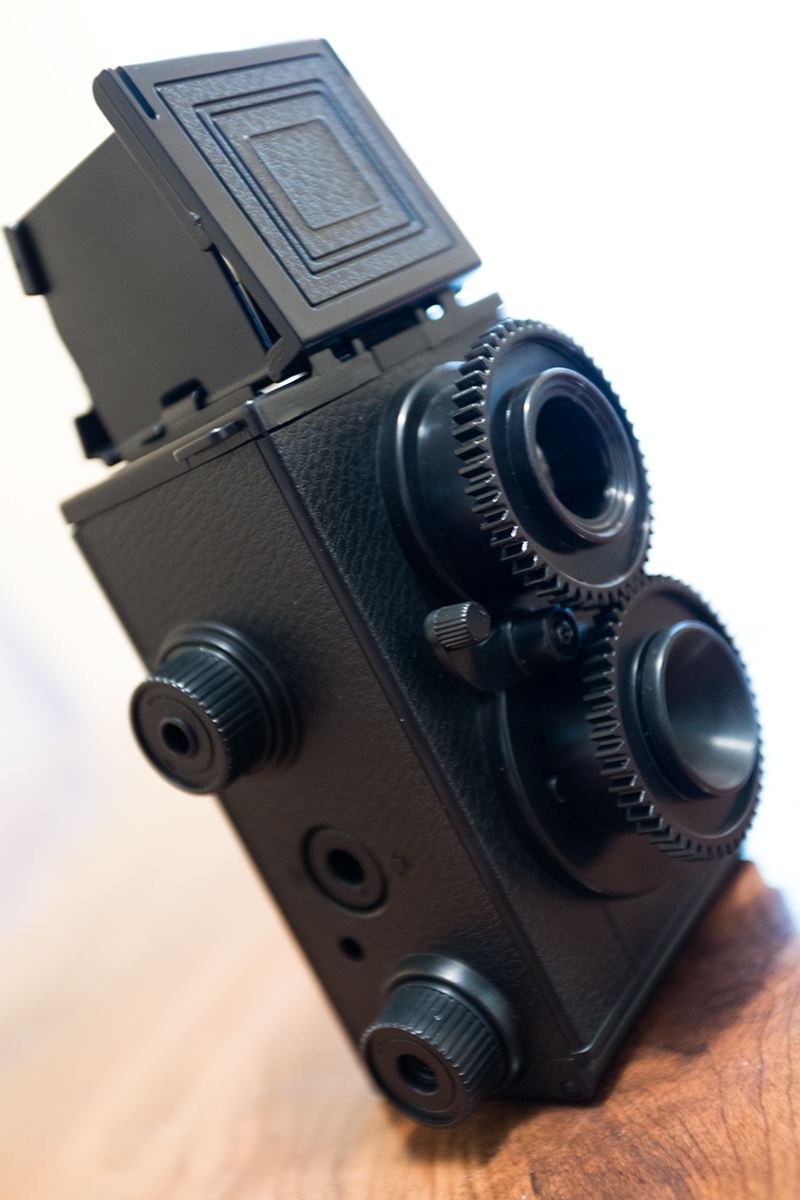 |
| Recesky DIY TLR, assembled. |
Everything is reduced to its component parts, so I found it pretty interesting, especially building out the shutter mechanism. Of course it's tragically basic, but it was still cool to put it all together and see it work.
Once fully assembled, you have a basic, no frills TLR; it has a flip-up hood that you can open to expose the matte waist-level finder, which like any TLR is reflecting an image back from the viewing lens (in reverse). The two lenses are linked by gear teeth so that when the viewing lens is being focused, the taking lens is focused by the same amount.
The shutter trips at what I can only imagine is a somewhat approximate 1/125 second, it's basically a spring-loaded piece of plastic that swings out and springs back when you press down on the shutter release lever, located at the front of the camera. The aperture is fixed at f/11, so really the only actual exposure control you have is changing up the film speed when you switch rolls.
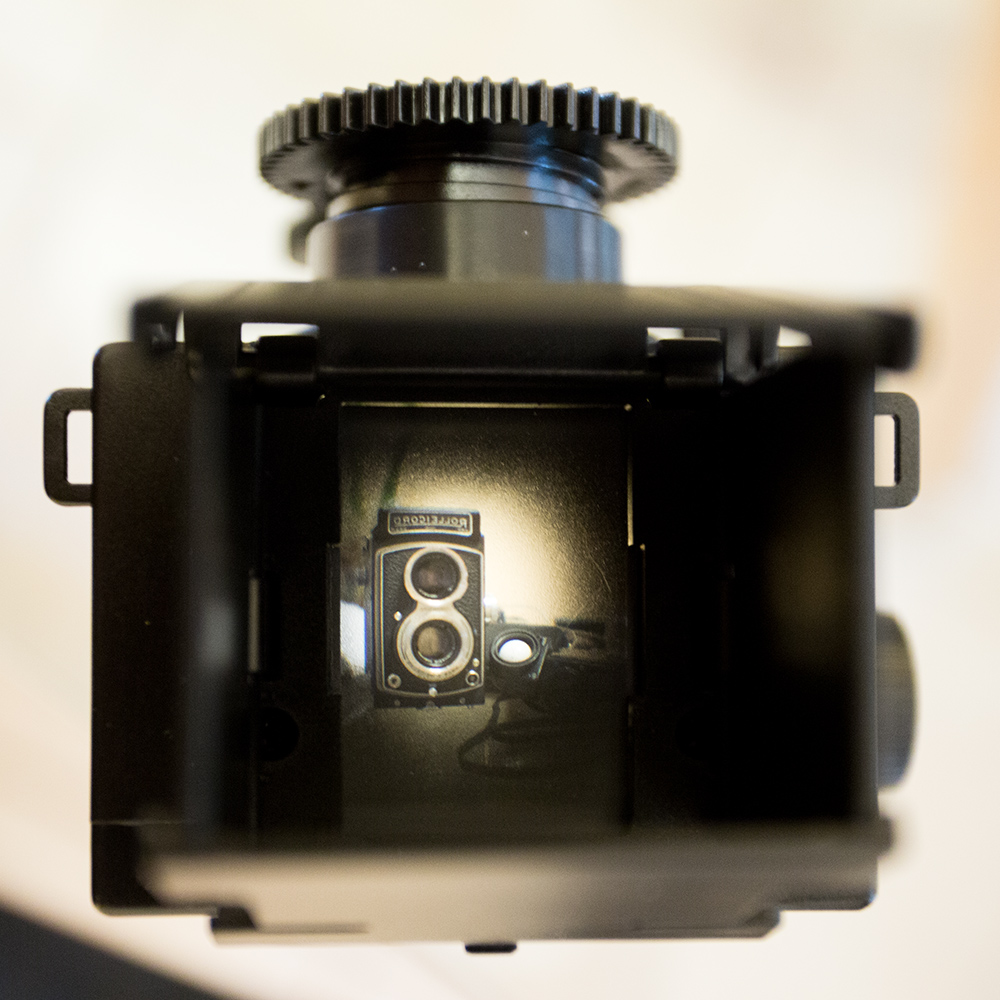 |
| No-frills finder screen. Use the vignetting as a gauge for sharpness in the final image, because only the center will have any at all. |
Actually that's not entirely true. You can change the aperture, but it requires removing the three components that make up the taking lens inside the housing and removing the aperture disc which is directly behind the lens itself. This gives you an approximate aperture of f/5.6, but of course by then your subject has run off to pursue more interesting stimulus. Additionally, by performing the same lens surgery but replacing that aperture disc in front of the lens rather than behind it, it creates a vignette effect. I haven't done that yet, mainly because I find the normal effect of the plastic lens to be more interesting than a mere vignette.
Film advance is done via a small knob, which of course provides no safeguard from double exposure, advancing too far, etc. basically, your film is a scroll, with a take up spool at the top and the film canister at the bottom. A second knob at the bottom acts as a film rewind when you're done. Be careful with it, just like the advance knob there is no safeguard. You can advance and rewind at will, and accidentally turning one or the other can cause problems for you. There is a film guide that usually sort of works, where when you advance the film a little arrow will tell you approximately when you have made it to the next frame. This is dependent upon the film pulling along a sprocket that turns the arrow on the "counter" wheel. The film doesn't always do this, however, sometimes instead opting to glide effortlessly over the sprocket and making film advance even more of a guessing game than before. It's not a perfect system, but I guess that's part of the charm.
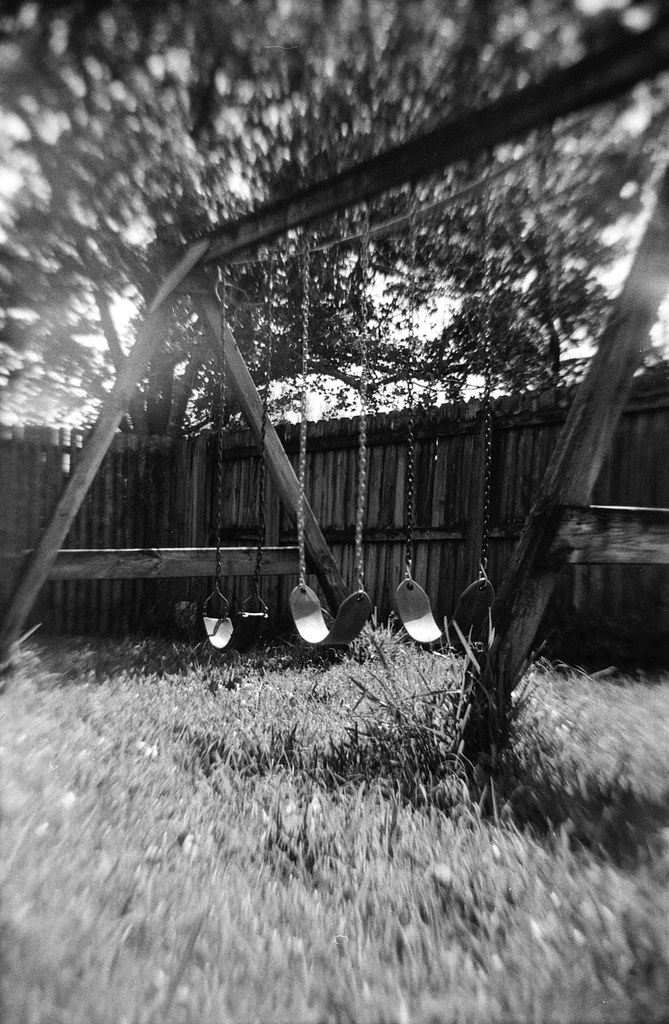 |
| Turns boring subjects into zombie apocalypse scenes |
So let's review: I shot a roll of film, possibly expired for 20 years, with no name or information other than "black & white ASA 125, 20 exposures", using a camera that my dumb ass built using a baby screwdriver and an instruction manual obviously written directly off the screen of a pocket translator, with a set shutter speed, set aperture, a plastic lens, a "best guess" focus system on the tiny matte screen, and a film advance that is about as likely to work correctly as flipping a coin and having it come up "green".
It was fun though. The results are certainly.... interesting. What you end up with is a low (but passable) resolution center area that sort of melts into some sort of warp-drive mash as you get further out from center. In some cases I actually kind of like the effect. Although I have to wonder, after having taken apart more Kodak Funsaver disposable cameras than I care to admit, why not include a lens element similar to those? Still plastic but thinner and without question reproduces the scene far better than these "coke bottle" lenses. Maybe the craziness of the lens is the whole point?
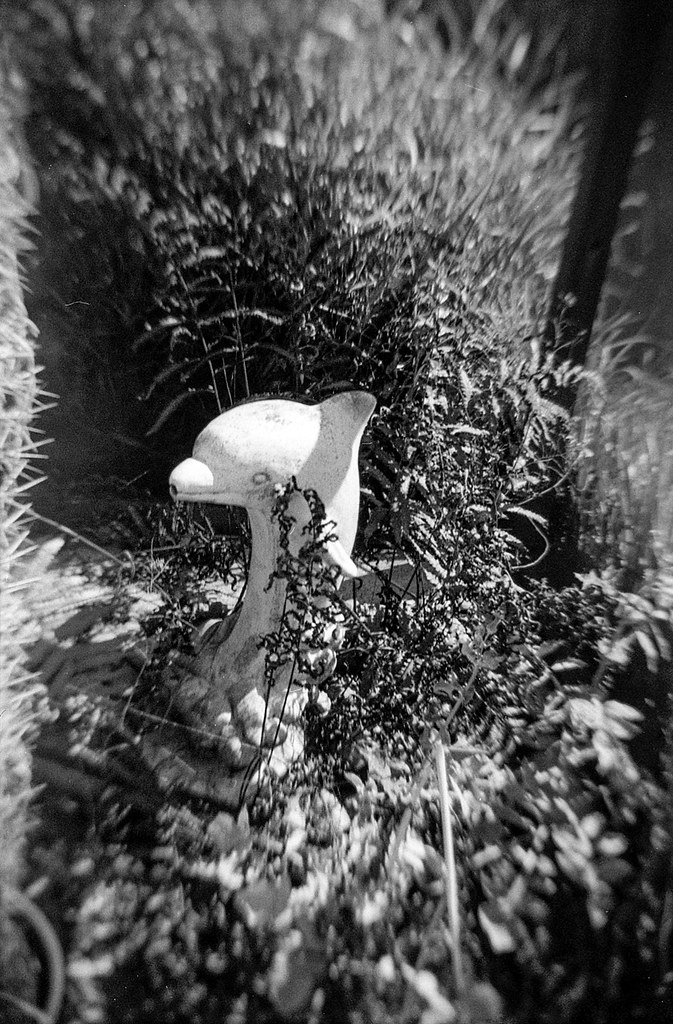 |
| The Elusive Land Dolphin |
 |
| Might be time to throw out the old grill |
If you want to see how I'm coming along with this little camera, feel free to check out my Flickr set devoted to all of my photos taken with (or of) the Recesky TLR.
I'm interested in knowing how other people are faring with this camera too. Leave a comment if you'd like to share your experiences or if you have any questions!
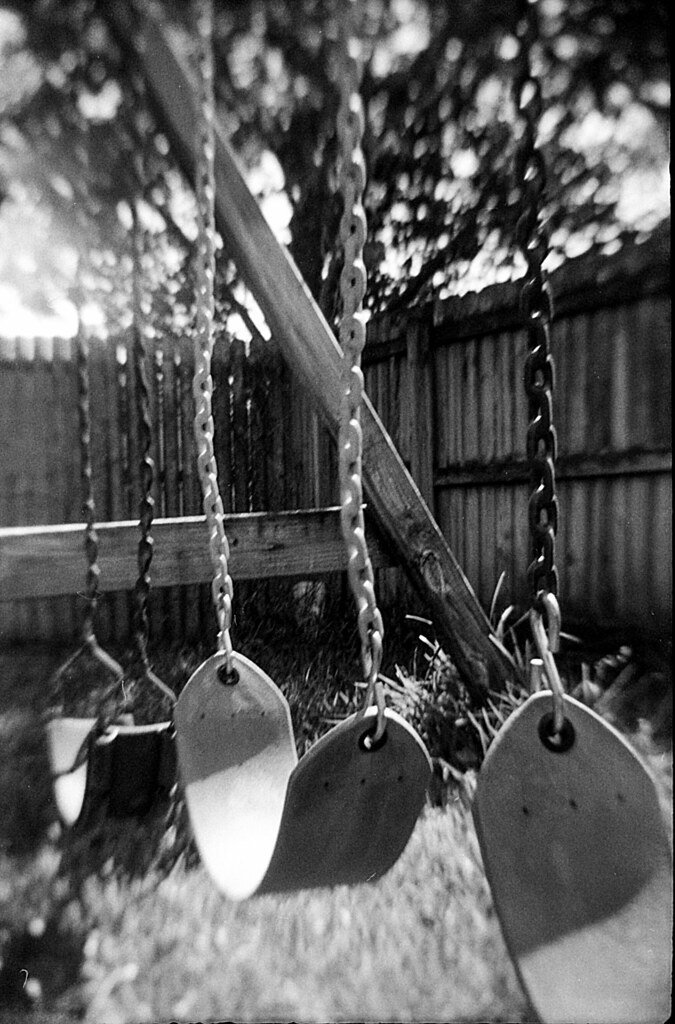
No comments:
Post a Comment